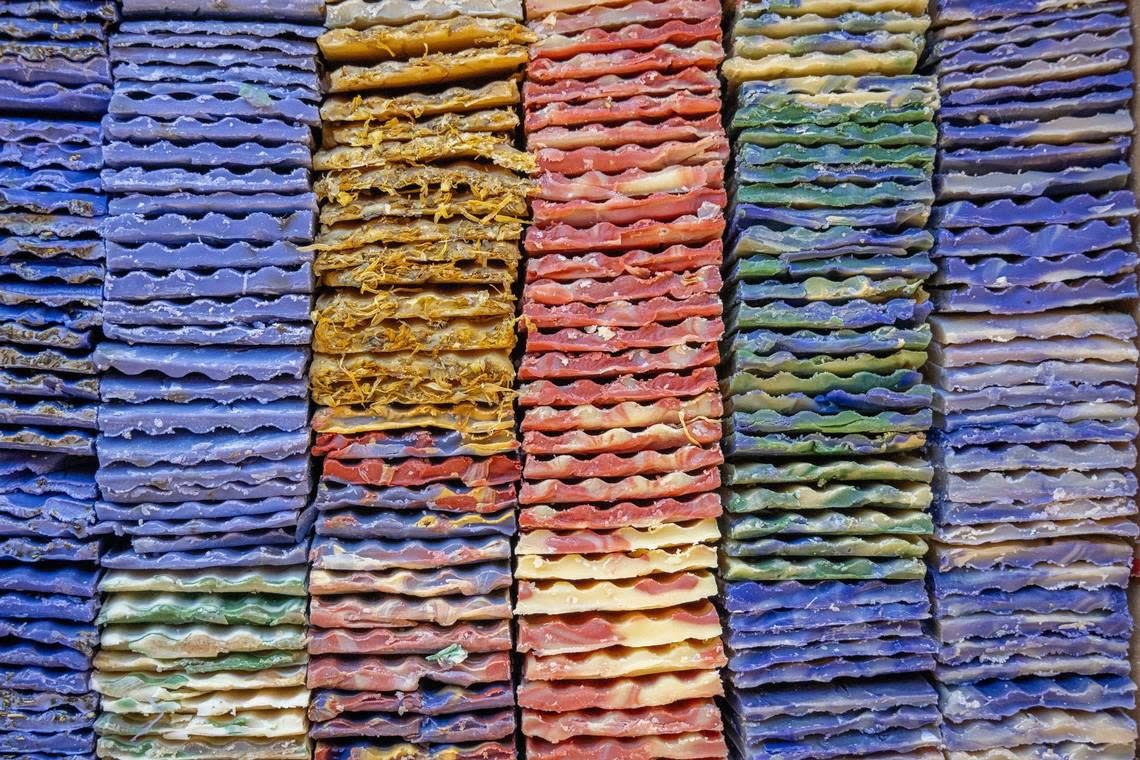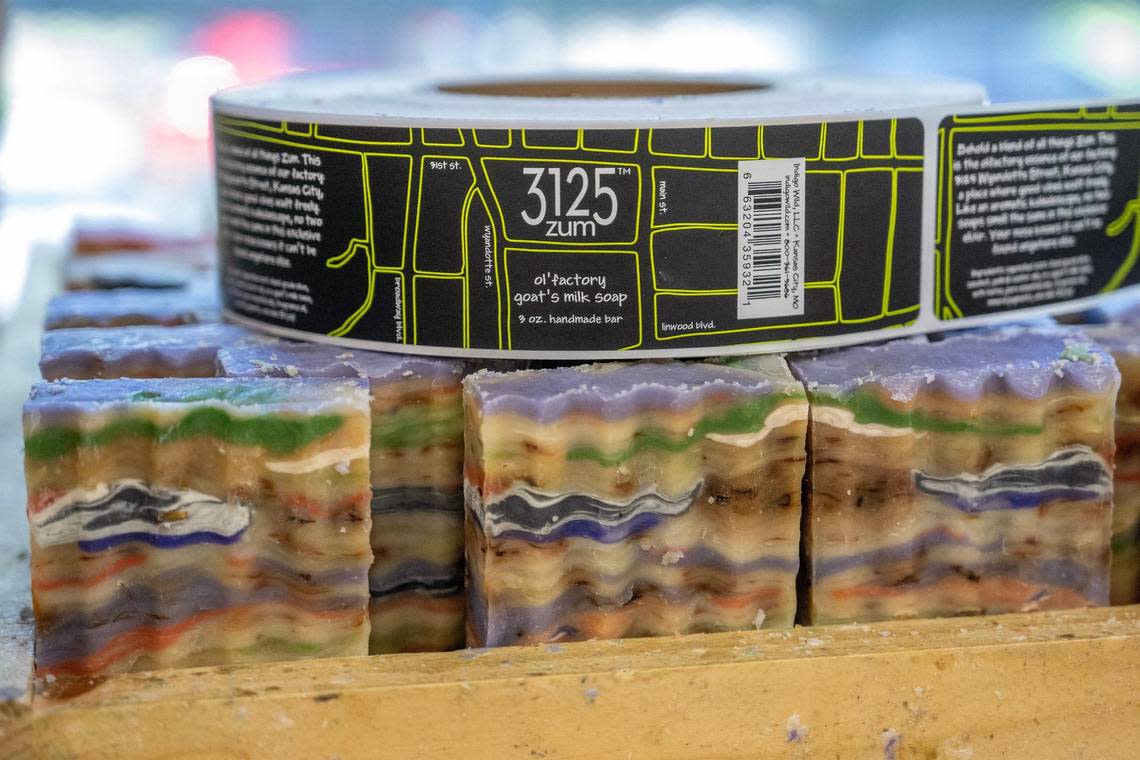Who knew something that smells this good could have anything to do with goats?
Inside Look is a Star series that takes our readers behind the scenes of some of the most well-known and not-so-well-known places and events in Kansas City. Have a suggestion for a future story? Email our journalists at InsideLook@kcstar.com.
Unless you’re a goat, you probably don’t think much about how great goats smell. That’s because they don’t normally smell like something you would want to rub all over your body.
An established Kansas City business has been putting goats to work for nearly three decades to help make an arsenal of artisanal soaps out of something only goats can supply, goat’s milk.
Indigo Wild uses the milk to make their popular line of Zum bath and body bars. If you haven’t used a bar of Zum soap you may have been enticed by the odor wafting from store shelves where the small bricks of fragrant soap are sold. The bars are packaged with a paper label that leaves a significant amount of the soap exposed meaning customers often smell the soap before they see it. Their products are on shelves all over the U.S.
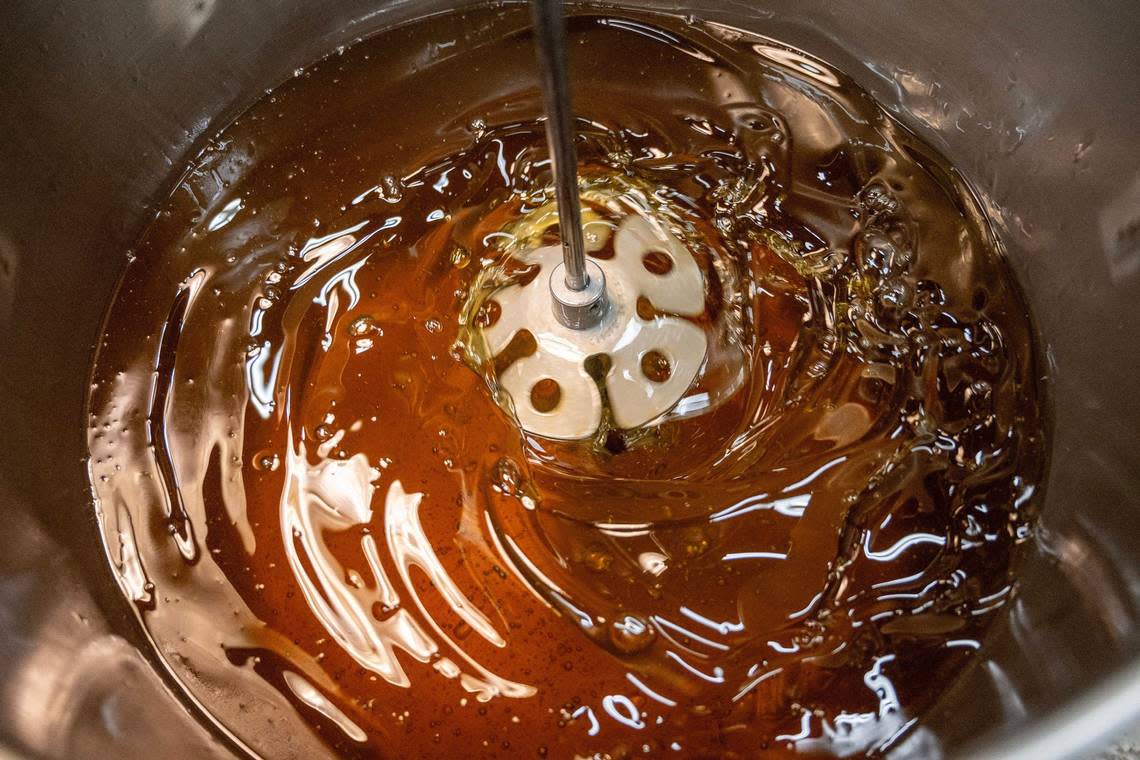
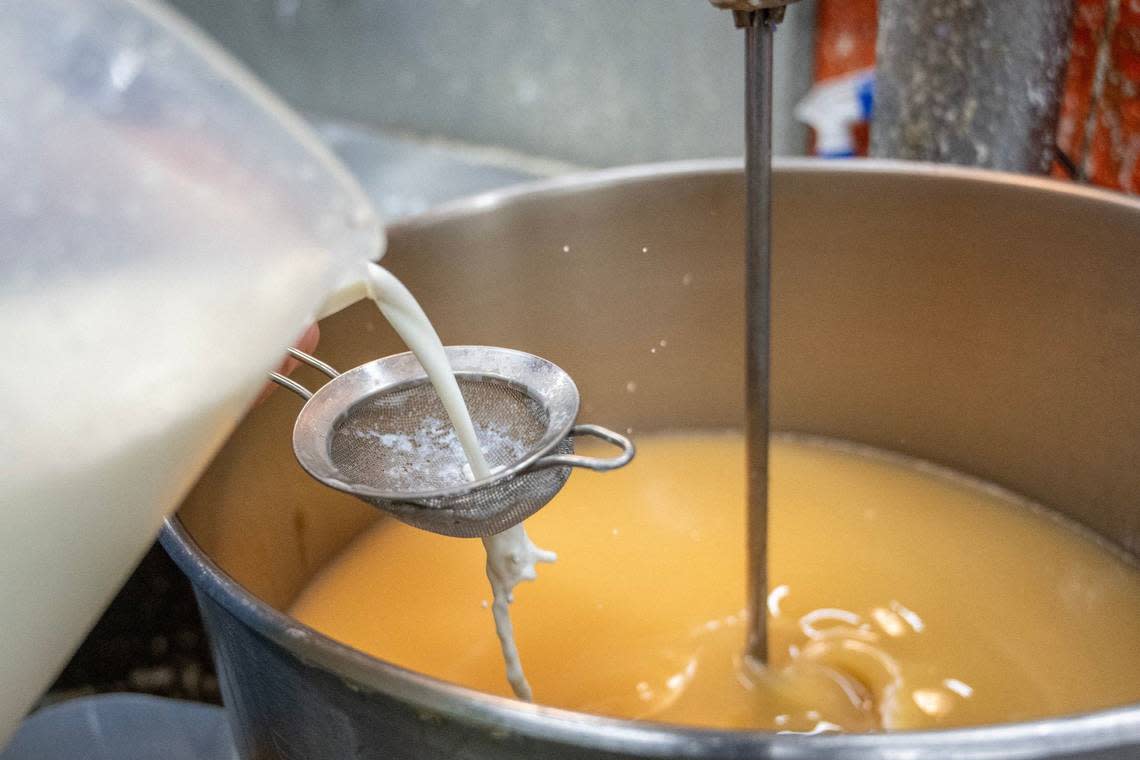
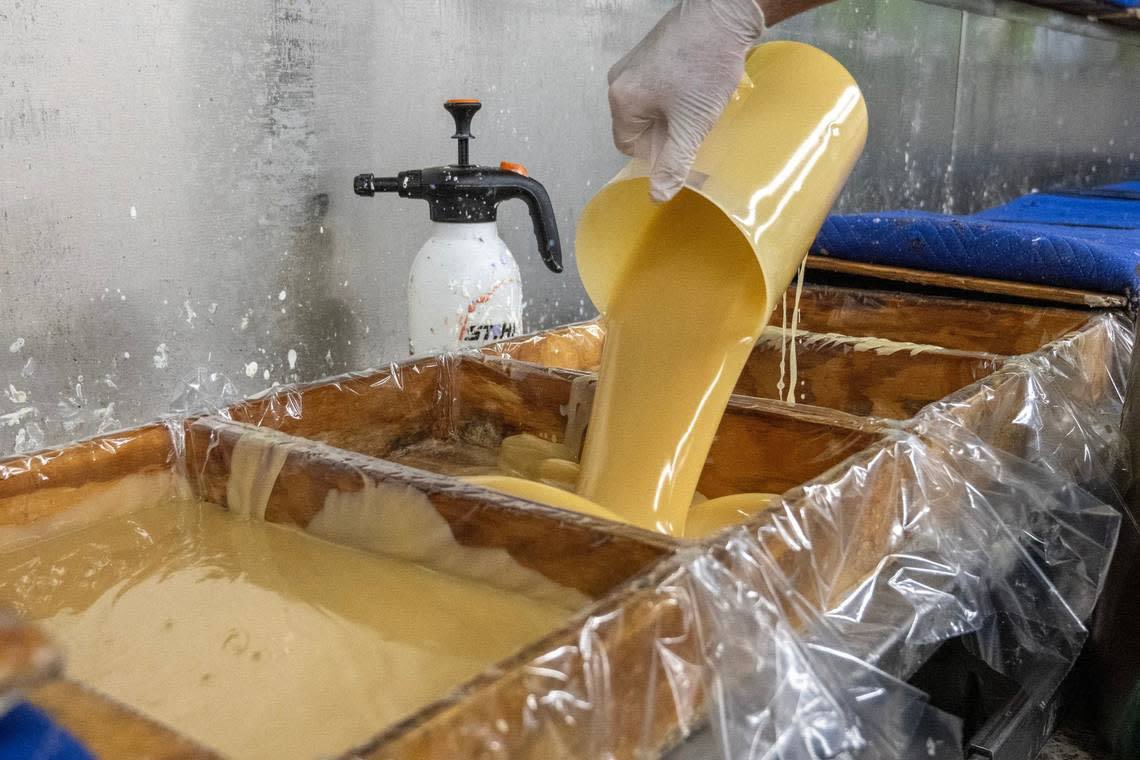
Zum Bars can also be purchased on the company’s website which lists close to 40 different scents ranging from frankincense and myrhh to lime-basil to geranium. They also manufacture other bath, body care and household cleaning products with the Zum label. The name “Zum” according to Indigo Wild’s website, came when, after a few bottles of wine, an early soap developer made the comment “That sure is zum bar of soap!” The name stuck.
“Each Zum Bar is crafted entirely by hand,” Rowan Page-Brennan, brand marketing manager at Indigo Wild said. “From the pouring to the swirling and labeling, our team of Zum saponifologists ensures that no two bars are exactly alike.” “Saponifoligists” is what they call their soapmakers who use the process of sopanification. The process is a chemical reaction that turns the fats, oils and lipids in their mixture of milk and oils into soap used in the production of the Zum Bars.
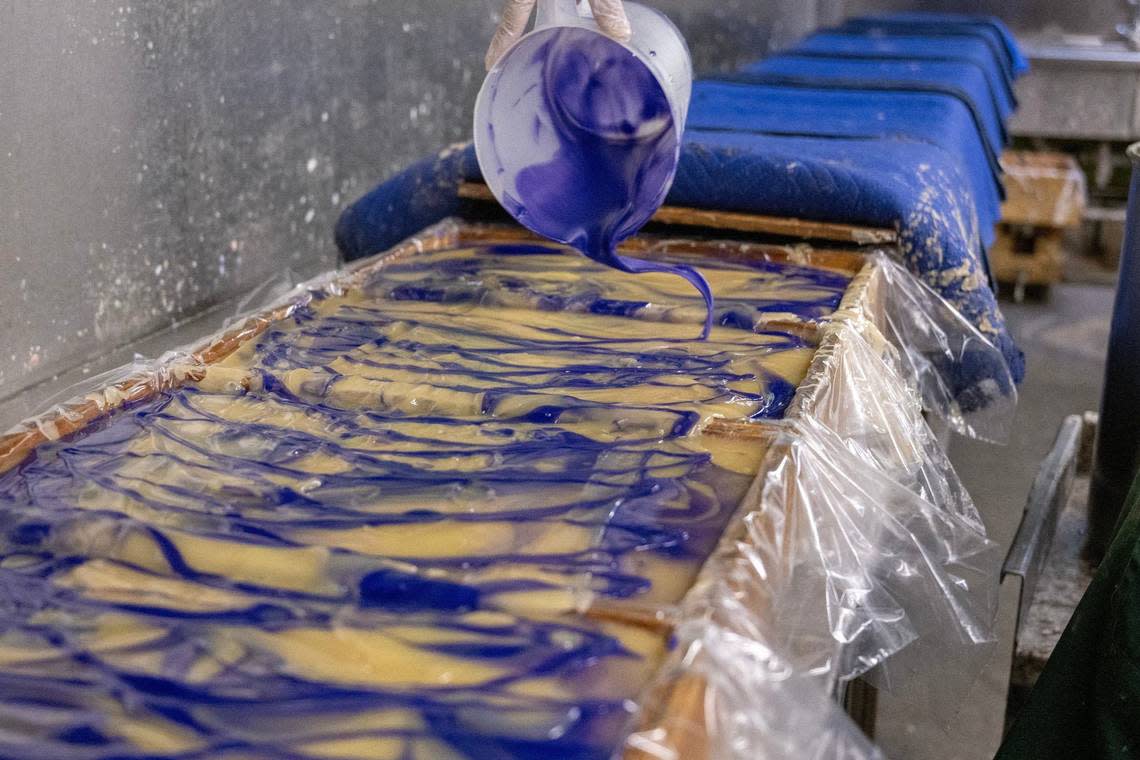
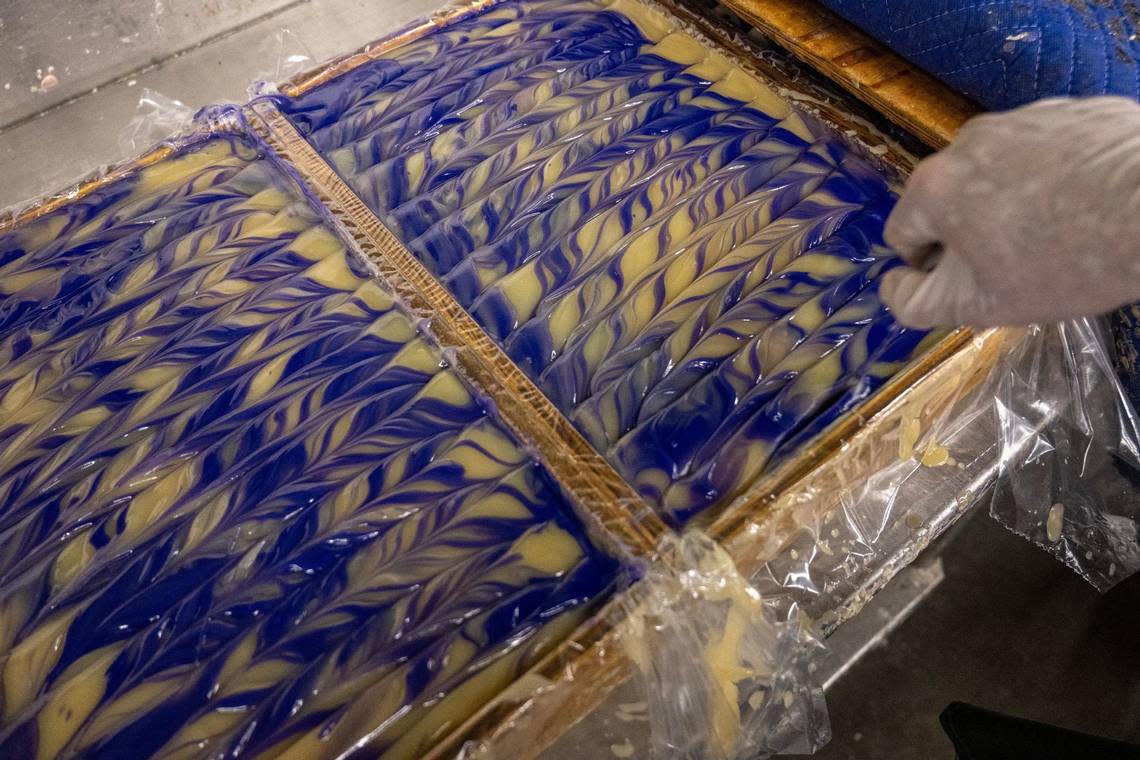
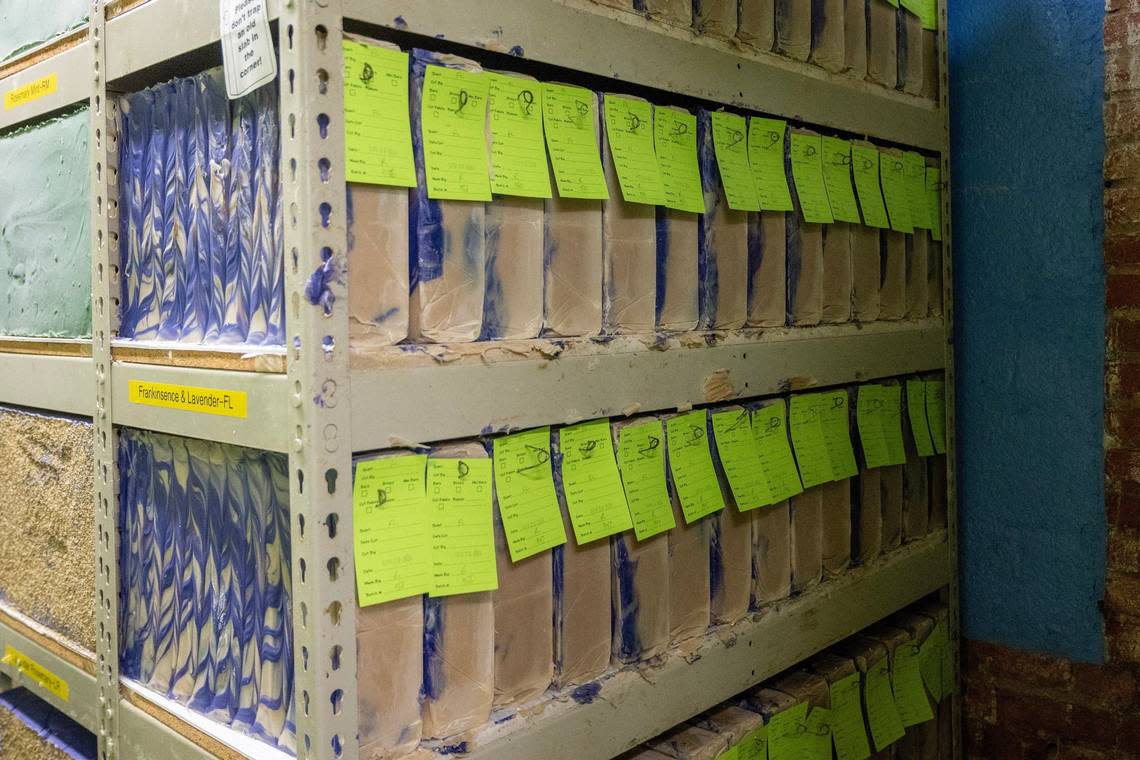
Indigo Wild adds the goat’s milk to their soap for an extra moisturizing factor “that your skin will love” according to their marketing literature. “We use goat’s milk in our soaps because of the moisturizing, hydrating qualities it brings to the soap and skin. Goat’s milk has a similar pH to your skin and contains naturally occurring triglycerides, otherwise known as healthy fats,” Page-Brennan said. “We were very particular when choosing our goat milks supplier to ensure that the goat’s milk that we use at the Zum Factory is harvested humanely and that the farms are registered with the ADGA (American Dairy Goat Association).”
Their full list of ingredients shows a Zum Bar is made up of sopanified 100% food grade olive, coconut, palm and castor oils in a goat’s milk base, with herbs, essential oils, fragrance oil and aloe. The soap gets the customers clean and keeps them soft but it’s those herbs and oils that entertain the senses in the form of dozens of scents that let you know a Zum Bar is in the room.
Among the products offered, the frankincense-lavender soap stands out as a customer favorite. “Frankincense-lavender combines the earthy notes of frankincense with the floral undertones of lavender,” Page-Brennan said. “It’s a harmonious blend that appeals to both new and returning customers.”
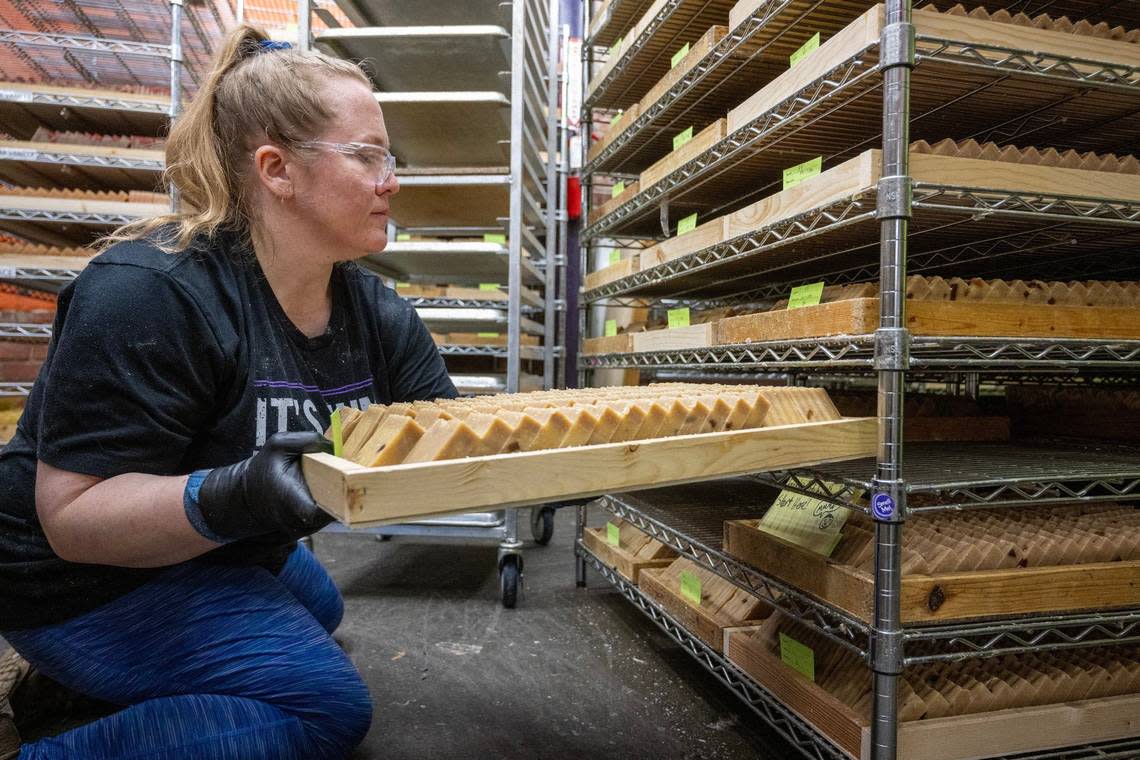
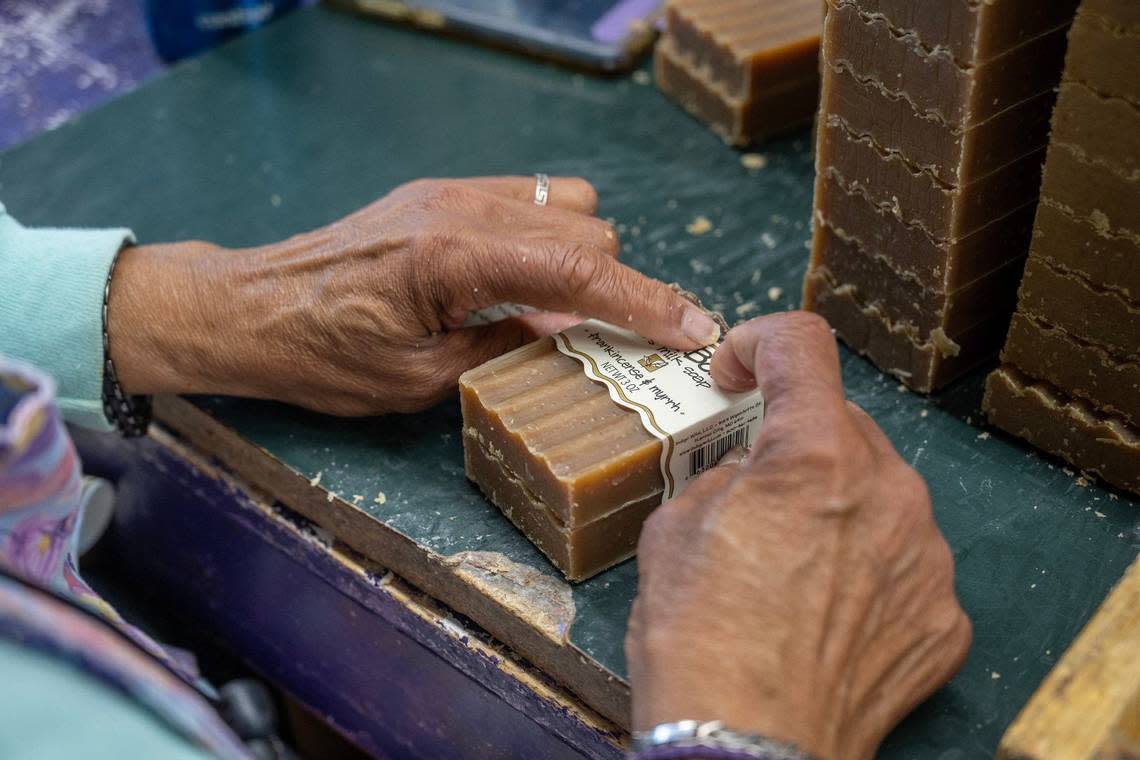

Another notable product is the limited edition 3125 bar soap. It gets its name from the address where all of the Zum Bars are produced, 3125 Wyandotte Street in Midtown Kansas City. With the olfactory closet of scents being mixed into the batches of soap, the modest, red brick building may house the best smelling manufacturing plant in all of Kansas City.
The 3125 Bar is sort of the kitchen sink of Zum Bars. “We use leftover soap from our production process, layering it to create a unique mosaic of scents and textures,” Page-Brennan said. “Each 3125 Bar has a distinctive fragrance inspired by the aromas of our factory.”
Making something usable out of scraps seems to epitomize Indigo Wild’s desire to emphasize sustainability in its operations. “We strive to use every part of the Zum Bar,” Page-Brennan said. “From samples included in customer orders to smaller pieces in our Zum Bundle Box and soap shavings used in our Zum sachets, we ensure that nothing goes to waste.”
